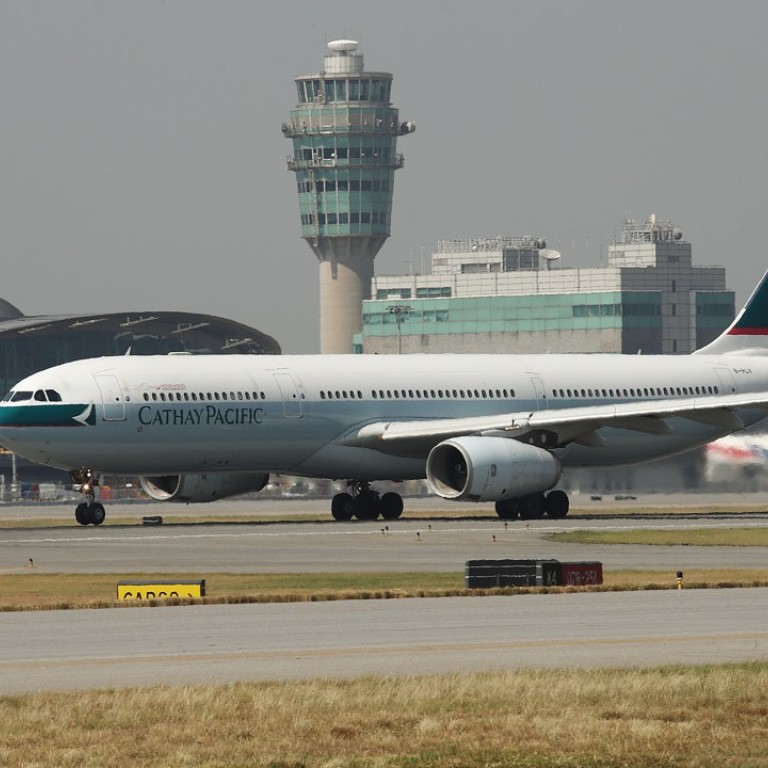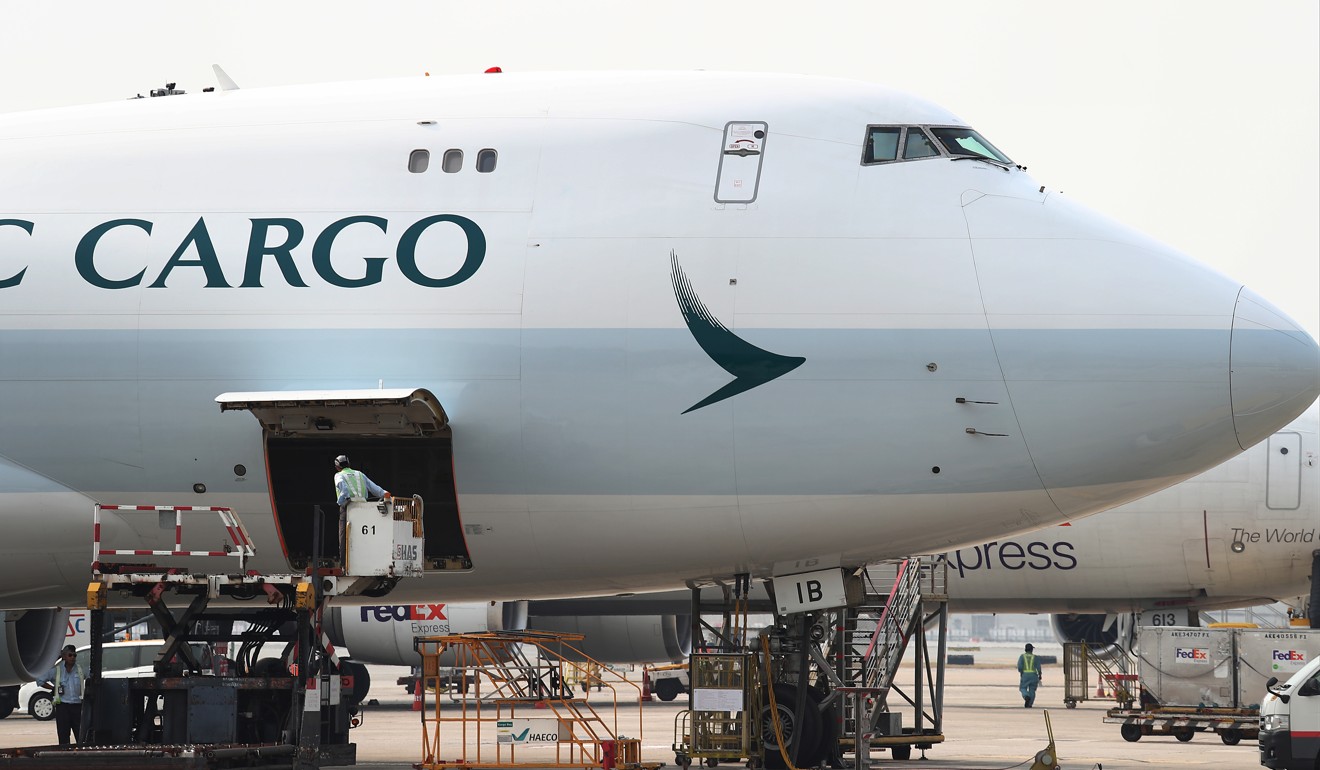
Higher fuel costs to drag Cathay Pacific’s earnings as Hong Kong carrier presses on with cost-cutting to return to profitability
Experts differ widely in their expectations of the carrier’s half-year results to be announced on Wednesday
Higher fuel costs are expected to slow Cathay Pacific Airways’ return to profitability, with the airline sending mixed signals on its performance ahead of its half-year results, to be unveiled on Wednesday.
Losses for one of Asia’s biggest airlines are expected to narrow from HK$2.05 billion (US$261 million) for the same period last year, though four analysts who spoke to the Post differed widely in their expectations, with the most optimistic predicting a HK$156 million profit and the most pessimistic a loss of HK$1.8 billion.
In a presentation to aviation analysts on June 22, the Hong Kong-based carrier warned of “growing external pressure on operating costs”.
Some of its biggest expenses, including fuel, maintenance and aircraft depreciation – writing down the value of new aircraft – are expected to keep rising, putting the airline on the wrong side of the profit line.
Cathay Pacific looks set to cut overseas jobs
“The overall business environment is expected to remain challenging, and the economic environment is getting tougher,” Cathay Pacific told analysts. “[Our] passenger business will continue to be affected by intense competition.”
Despite the possible setbacks, the company noted that business was “recovering” and restructuring “benefits continue to be realised … in 2018”.
This “remains on target to take us back to being profitable and position us for future growth”, it said.
In recent years, the airline has come up against mainland Chinese rivals expanding long-haul flights to Europe and North America, undercutting prices and giving customers a credible alternative to a stopover in Hong Kong.
But the airline’s cargo business is set to remain a star performer, offsetting a weaker performance in the passenger airline unit. Profits from Cathay’s subsidiaries, including loyalty division Asia Miles and associate Air China, in which it has an 18.13 per cent stake, should minimise total losses.

Cathay is past the halfway mark of a three-year restructuring effort that started in 2016 aiming to cut HK$4 billion in costs and boost revenue.
So far it has axed 600 of 3,600 head office jobs in Hong Kong and begun consulting selected employees based in its 100 offices worldwide on trimming staff numbers. The company employs about 7,600 staff in locations outside Hong Kong.
The big challenge lies in reducing the pay and benefits of its 3,300 pilots by 10 per cent, or HK$1 billion.
Cathay Pacific sends in high-flying manager with hopes of reviving pilot talks
Corrine Png of transport research firm Crucial Perspective was the most cautious among analysts the Post surveyed, forecasting a HK$1.8 billion first-half loss.
“The 32 per cent year-on-year spike in spot jet fuel prices in [the first half of 2018] is a huge challenge as fuel is Cathay Pacific’s largest cost component,” Png said.
The 32 per cent year-on-year spike in spot jet fuel prices … is a huge challenge as fuel is Cathay Pacific’s largest cost component
“As Cathay’s fuel hedges were locked in at higher prices, they cannot offset the negative impact of higher spot fuel prices.”
At the opposite end, a bullish analyst from a major European bank, who declined to be named, predicted a half-year HK$156 million profit, taking into account a big increase in revenue more than covering rising costs.
Geoffrey Cheng Bok-hoi, deputy head of research at investment bank Bocom International, said he expected the airline to make a net profit of HK$140 million, citing higher revenue due to improved yields – selling more fares – which outpaced its rising costs.
However, Ajith Kom, UOB Kay Hian’s director of Asia transport research, forecast a HK$720 million loss as he anticipated strong growth in the carrier’s passenger and cargo revenues. The Post saw internal data from the airline showing that passenger and cargo revenues for the first seven months of this year were ahead of target by 4.6 per cent and 25 per cent respectively.
“If Cathay means it has growth [in revenue], this is better than expected,” said Kom, who pegged the airline’s first-half revenue to be around the HK$50 billion mark.
“If they have managed to do that, then the loss could be a tad lower,” the UOB analyst suggested.

Singapore Airlines’ financial results act as a snapshot of the health of other carriers in the region. Last month, it saw first-quarter profits tumble 59 per cent to HK$803 million on higher fuel costs. In the same period, Japan Airlines saw revenue rise more than costs as profits rose 0.7 per cent to HK$1.75 billion.
Only four of the 18 publicly traded full-service airlines in the Asia-Pacific region lost money in 2017: Cathay, which recorded an annual loss of HK$1.25 billion last year, Virgin Australia, Thai Airways and Garuda Indonesia.
China’s three state-owned airlines – Air China, China Southern and China Eastern – recorded a combined profit of HK$22.4 billion in 2017, up a fifth on the previous year.
And the world’s best airline in 2018 is …
Among the world’s profitable airlines last year were the parent companies of the top three European airlines, Lufthansa, British Airways and KLM, which reported a combined profit of HK$40 billion, and US carriers Delta, American and United, whose profits totalled HK$59 billion.
Global airline profits are on course to reach US$33.8 billion in 2018, down 12 per cent from an earlier estimate made in December last year, due to rising fuel and labour costs, according to the International Air Transport Association.
But Asia-Pacific carriers are expected to garner 25 per cent of those earnings, with the region tipped to be the fastest growing sector in terms of passengers.

